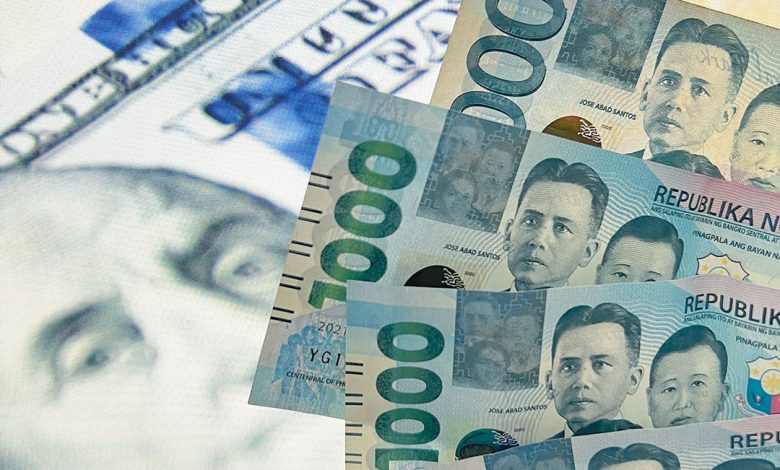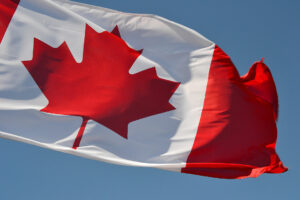Peso depreciation minimal, says Remolona

By Keisha B. Ta-asan, Reporter
THE DEPRECIATION of the peso against the dollar has only been minimal compared with other currencies in the region so far this year, Bangko Sentral ng Pilipinas (BSP) Governor Eli M. Remolona, Jr. said on Monday morning.
The peso slumped to an eight-month low against the greenback on Monday, as market players expect the BSP to keep rates on hold at its Thursday meeting.
The local currency closed at P56.78 versus the dollar, weakening by 46.50 centavos from Friday’s P56.315 finish, data from the Bankers Association of the Philippines’ website showed.
This was the peso’s weakest close in over eight months or since its P56.94-a-dollar finish on Nov. 23, 2022 (See related story: Peso sinks to over eight-month low as dollar hits one-month high).
Mr. Remolona said the central bank is keeping a close eye on the exchange rate.
“Compared to our neighbors, the peso has weakened only slightly,” he said during the Philippine economic briefing in Laoag City. “Since the beginning of the year, the peso has depreciated by less than 1%. This depreciation is smaller than those of our neighbors.”
He said that as of its P56.24 close on Aug. 8, the peso has depreciated by 0.86% from its P55.755 close on Dec. 29. This is smaller compared with the Thai baht (-1.09%), the Malaysian ringgit (-3.77%), the South Korean won (-4.24%) and the Japanese yen (-8.35%).
Mr. Remolona said the peso has weakened against the greenback due to the US Federal Reserve’s move to hike rates anew.
He said the local currency has since appreciated from its record low of P59 against the dollar in October last year, thanks to the tools the BSP used to mitigate the volatility in the foreign exchange market.
“We have raised [policy rates] by 425 basis points (bps) and that has helped strengthen, stabilize the peso. We have occasionally intervened in the foreign exchange market. This is to avoid destabilizing swings in the exchange rate, which tend to upset the markets,” he said.
PRESSUREThe dollar’s strength was seen on Monday as Fed officials remain hawkish, China Banking Corp. Chief Economist Domini S. Velasquez said in a Viber message.
“The peso is also being pressured further due to expectations that the BSP will stand pat on its meeting on Thursday,” she added.
A BusinessWorld poll showed 13 of 15 analysts predict the Monetary Board will extend its pause at its Aug. 17 meeting. If realized, this will mark the third straight meeting that the BSP has kept policy rates unchanged.
The Monetary Board raised borrowing costs by 425 bps from May 2022 to March 2023, bringing the key policy rate to 6.25%.
Rizal Commercial Banking Corp. Chief Economist Michael L. Ricafort said the depreciation of the peso “increases the odds of a 25-bp local policy rate hike on Aug. 17, to match the latest +0.25 Fed rate hike on July 26.”
The hike would maintain a comfortable interest rate differential between the Philippines and the US. This in turn will help stabilize the peso, import prices, and overall inflation, he added.
“Peso coming under pressure just like all other emerging market currencies with US Treasury yields shooting up over the weekend,” Nicholas Antonio T. Mapa, senior economist at ING Bank N.V. Manila, said.
The 10-year US yield climbed about 8 bps on Friday and was marginally higher in Asia, Reuters reported. At 4.18%, the 10-year US yield is about 16 bps from October 2022 highs.
“As BSP governor indicated, it’s good that they have a formidable stash of GIR (gross international reserves) ready to deploy against this short-term volatility,” Mr. Mapa said.
Latest central bank data showed gross international reserves inched up by 0.3% to $99.7 billion in July, from $99.4 billion as of end-June. This is the highest level of dollar reserves in two months or since $100.6 billion posted in May.
“The BSP will take into consideration this development on top of fast fading growth and inflation back within target as early as the fourth quarter into their data-driven decision on Thursday,” Mr. Mapa said.
He noted that rate hikes have slowed the economy’s growth momentum, and the Philippines will still feel the impact of previous tightening in the coming months.
“We still expect a pause from BSP although given the recent pressure on the peso, they may need to retain a hawkish stance by vowing to act with rate hikes should inflation risks materialize,” Mr. Mapa added.
University of Asia and the Pacific Ronilo M. Balbieran in an interview with One News said the BSP may extend its policy pause on Thursday due to the disappointing gross domestic product (GDP) growth in the second quarter.
However, the Monetary Board “should already start imagining a possible rate cut starting next month, to accommodate to expect a slowdown of our economy just in case there’s a huge impact of El Niño on our agriculture,” he said.
The Philippine economy grew by 4.3% in the second quarter, much slower than the 6.4% growth in the first quarter and 7.5% a year ago.
Mr. Balbieran also said it is still possible for the government to achieve its 6-7% growth target for this year.
“I think it’s just a procurement delay problem. The money is there, but we just need to spend it. [Finance] Secretary [Benjamin E.] Diokno promised that the National Government will accelerate spending on infrastructure and that should provide a massive push for our economic growth for the third quarter and the fourth quarter,” he said.
Mr. Diokno earlier said the economy must grow by at least 6.6% in the second half to achieve the lower end of the 6-7% government target. He emphasized that an “aggressive” catch-up plan for government infrastructure projects as well as “deliberate spending” by government agencies are “essential” in meeting this goal.




